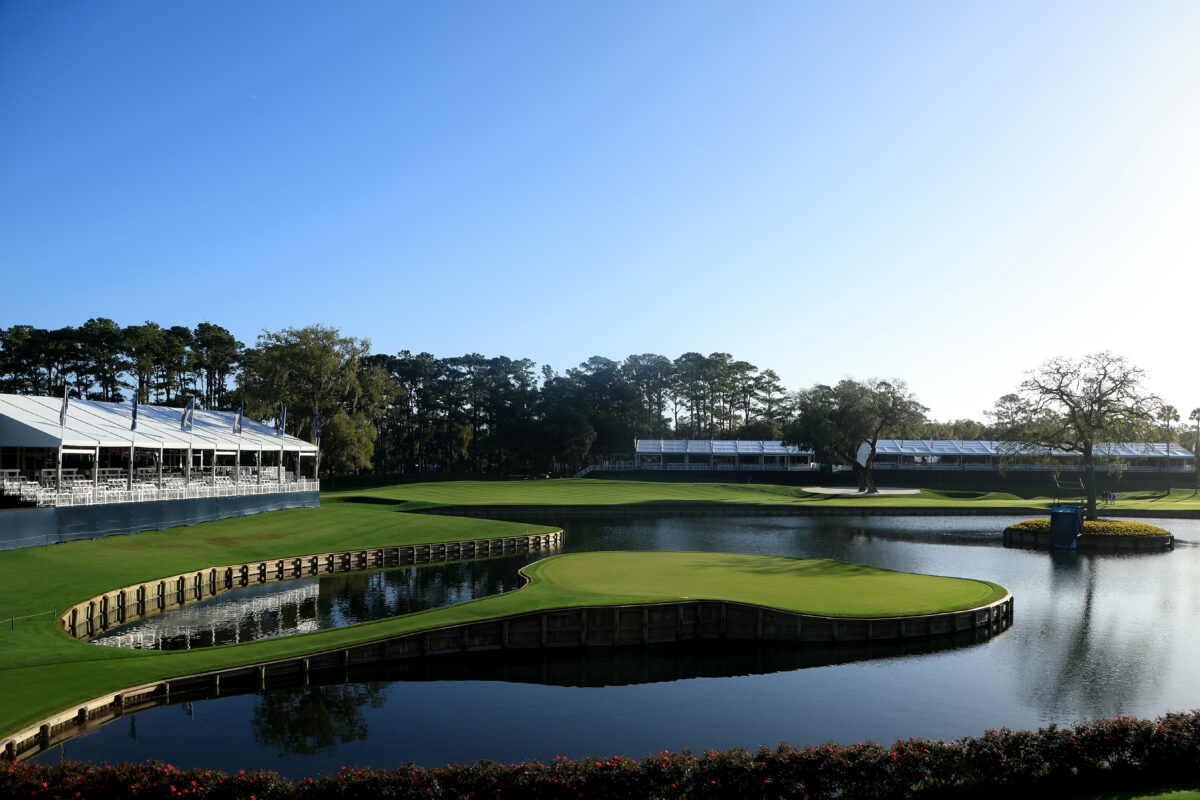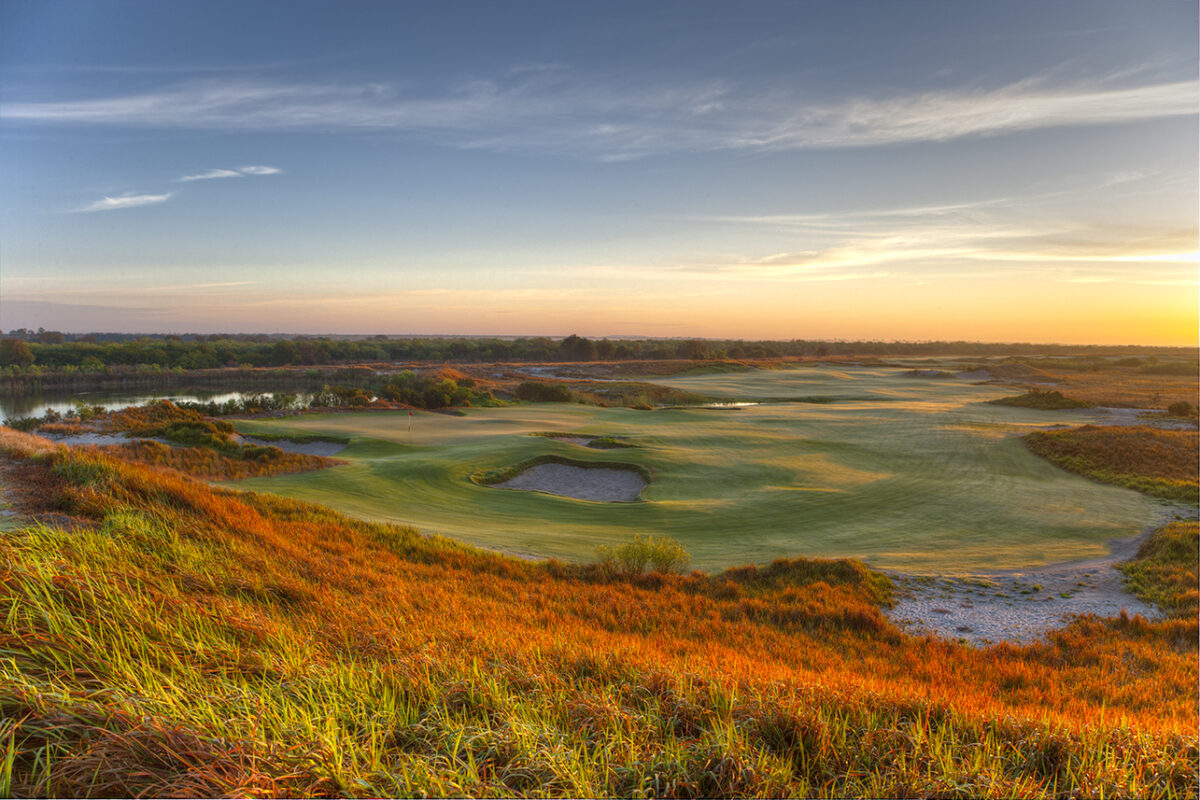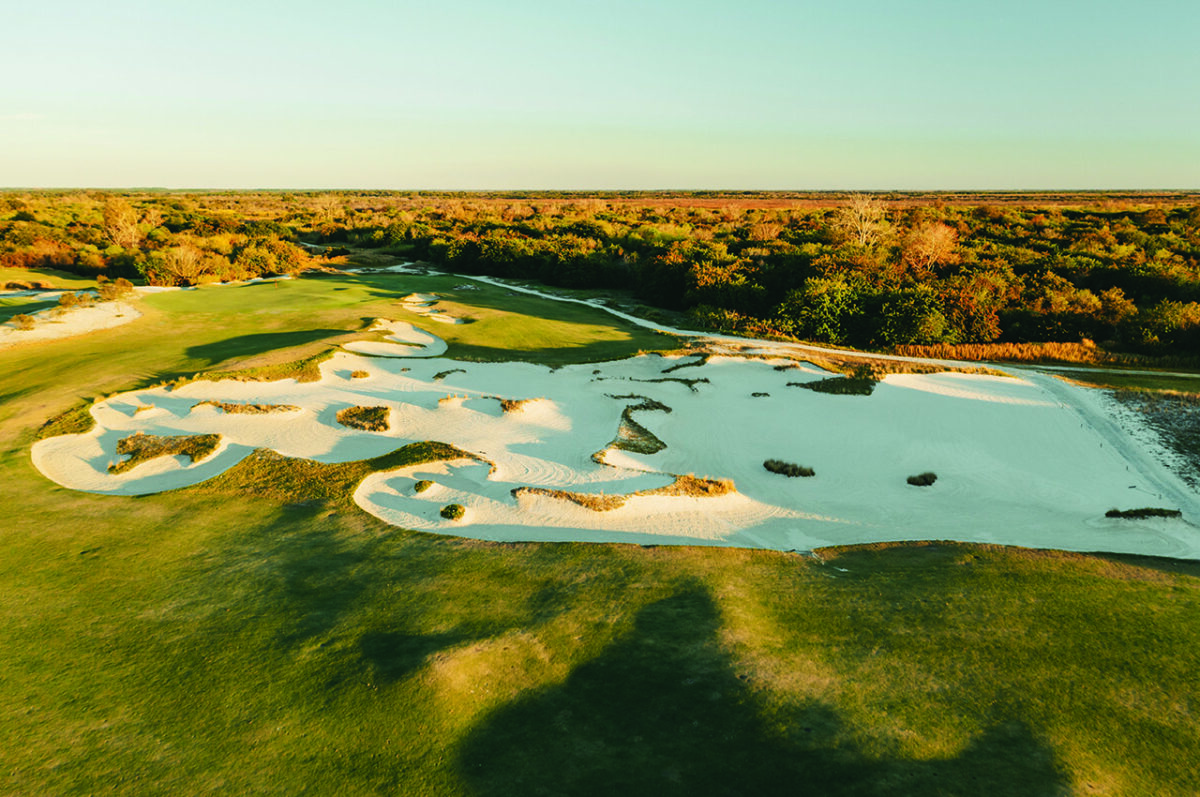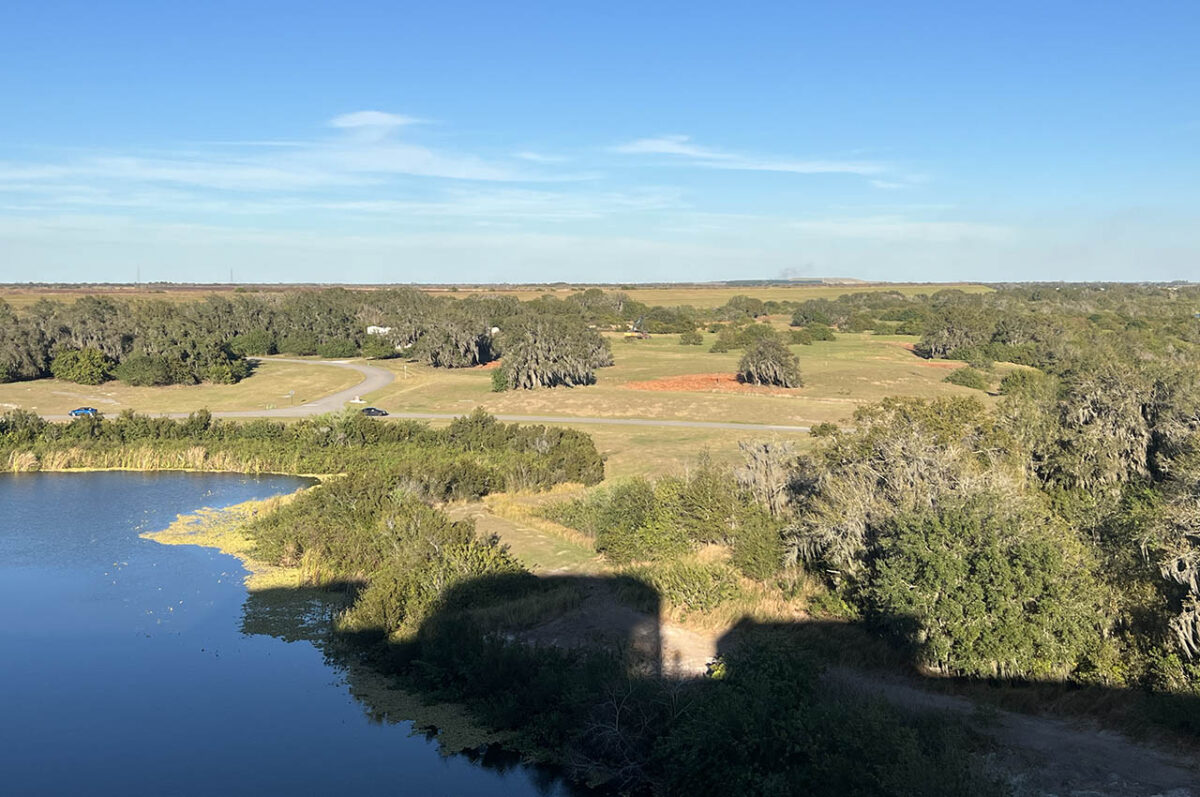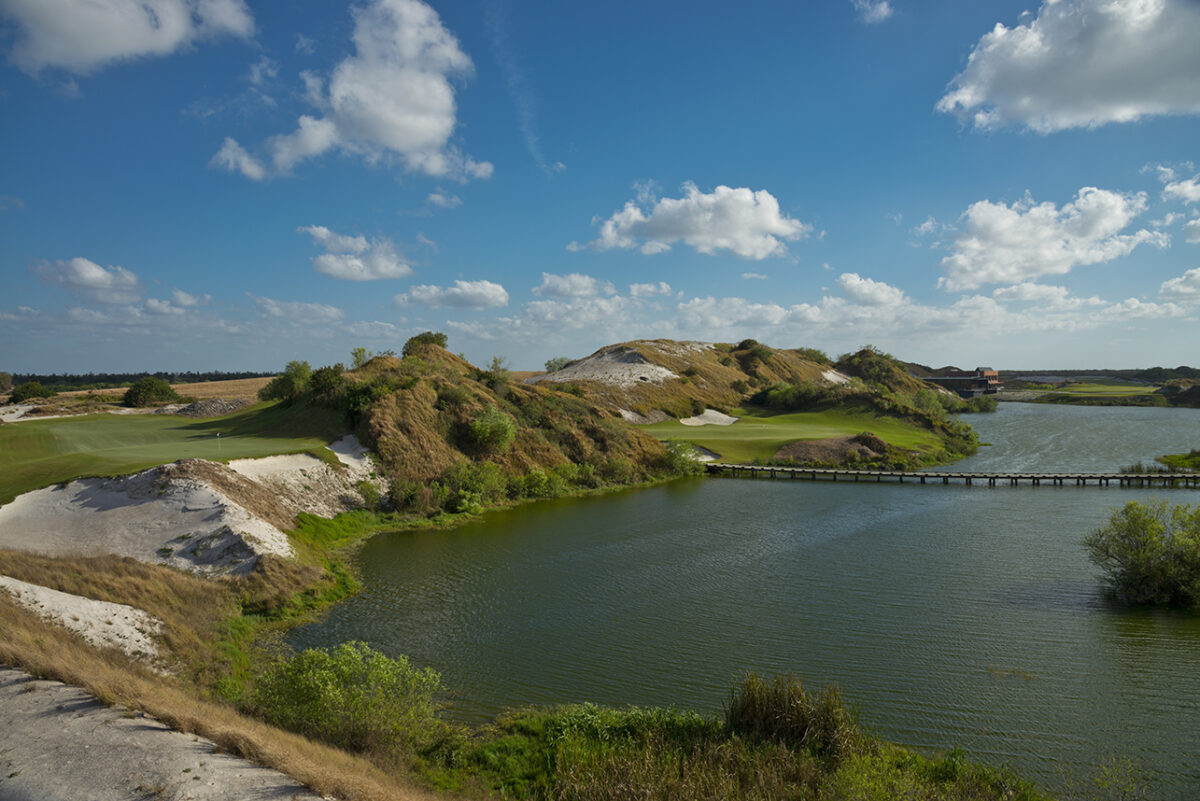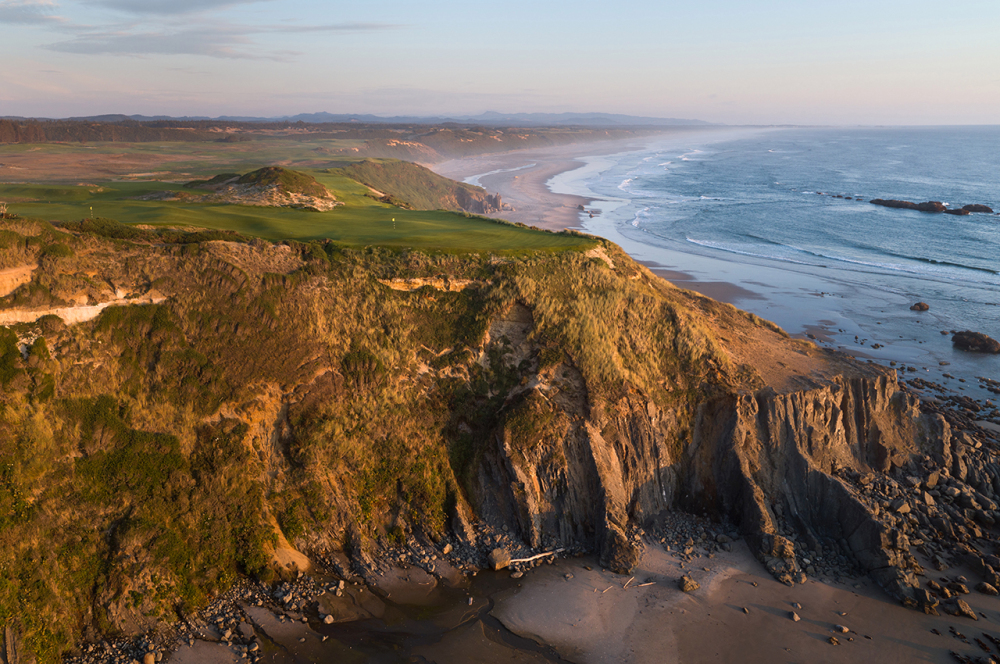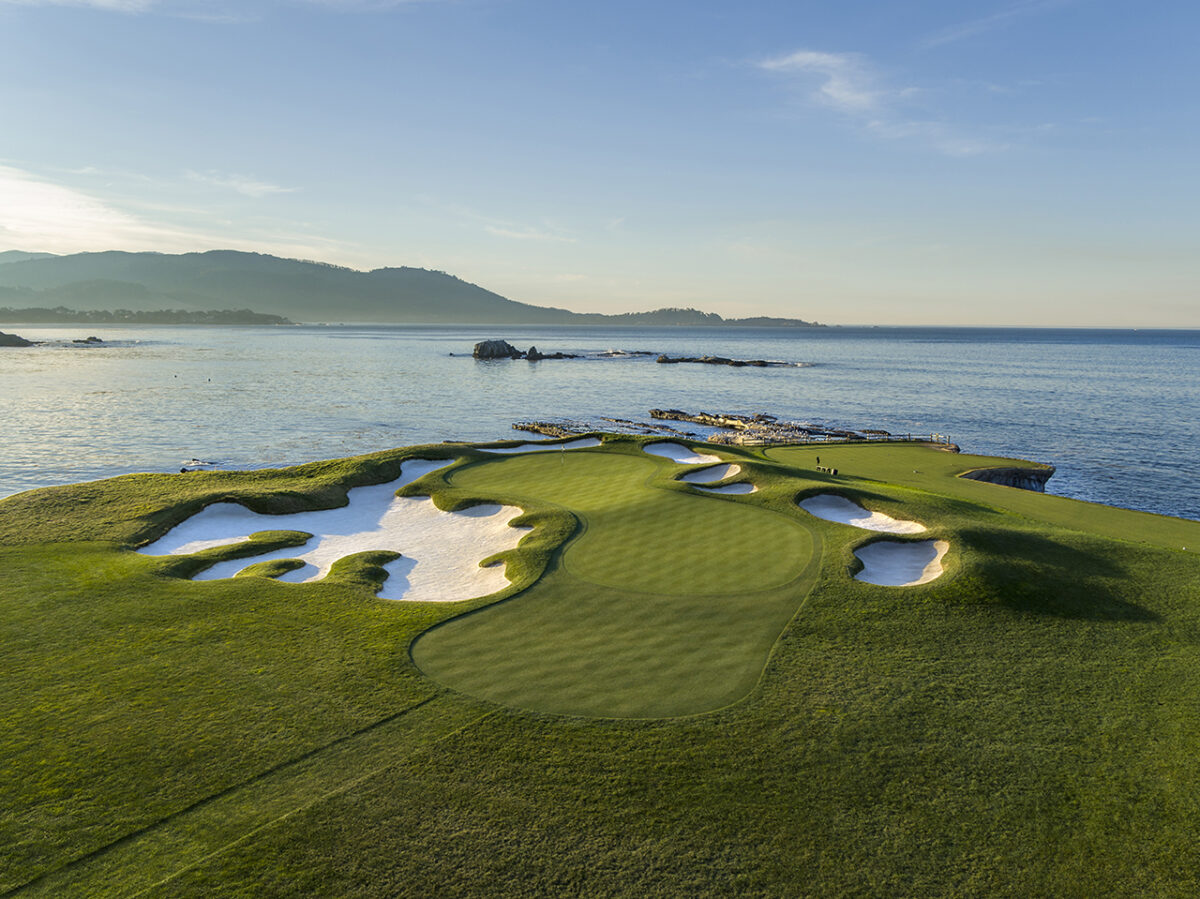As Hurricane Ian rampaged north along Florida’s Atlantic Coast, officials and first responders in the state were focused on providing relief and rescue for the thousands of people most in need. As various local and state agencies assess possible loss of life, golf is of course a low priority for those affected by the storm that approached Category 5 strength as it roared ashore.
It’s still worth a look to see how courses in Florida might have been impacted as well as what might be in store for the second projected landfall in South Carolina as what is now a tropical storm continues north. Golf is a huge industry in both locations, with thousands of employees and hundreds of courses likely already affected – or soon to be – by the devastating storm.
As of Thursday morning, it proved impossible to obtain status updates for the courses closest to landfall near Fort Myers, Florida. Communications have been compromised, and many residents of Southwest Florida are still without power and could be for days or weeks. Golf course operators and superintendents were in the field or attempting to reach their courses to evaluate damage, reports of which will roll in slowly.
There are dozens of golf courses, public and private, around the Fort Myers area, parts of which are reported to have received winds in excess of 140 mph along with massive storm surges of coastal water and flooding. All that area’s courses likely received damage of some sort, some of it possibly disastrous. Based on past experiences with hurricanes in Florida, it’s likely most of them have trees down, with some courses losing hundreds or possibly thousands of trees. Past hurricanes of lesser strength have proved capable of rendering tree-lined fairways into jumbled messes of snapped conifers and oak trees.
Goodness. Winter Pines Golf Club completely underwater near Baldwin Park. You can see a single green at the end of the video. @TTerryWFTV @WFTV #HurricaneIan pic.twitter.com/PQ1fvdniLM
— Alex Walker (@AlexWalkerTV) September 29, 2022
Courses also might be underwater, especially those close to the Gulf of Mexico, the Intracoastal Waterway and inland bays, rivers, creeks and other waterways. In Southwest Florida, that list includes almost every course. Standing water has been reported on courses as far north as The Golden Bear Club at Keene’s Pointe just west of Orlando not far from Disney World, and damage also likely includes washed-out bunkers at many courses – in past storms, it wasn’t uncommon to see bunkers inundated or stripped completely of sand.
It could be weeks or months before some of the worst-hit courses are able to reopen. Grass can continue to grow so long as fresh water receded fairly rapidly, but the general cleanup efforts can be extensive.
Golfweek’s Best maintains a list of top courses across the state, both public-access and private. Many of the courses on these lists likely experienced some damage, with several courses in particular a cause for increased concern.
Nearest Fort Myers and landfall, the public-access Gasparilla Inn & Club in Boca Grande sits just a few miles from the initial landfall site. Likewise, the private Coral Creek Club in Placida was directly in the track of the storm. Both courses sit near saltwater, with Gasparilla Inn & Club on a barrier island. Emails and calls to that facility were understandably unanswered as relief officials and first responders continue to focus on other more pressing matters. Gasparilla Inn & Club ranks as No. 27 on Golfweek’s Best list of public-access courses in Florida, while Coral Creek Club is No. 14 on Golfweek’s Best list of private courses.
My friends parents are in Bonita Springs, Florida and sent me this picture. The pool is on the second floor of their condo complex and the water behind that is the golf course. Absolutely devastating. #Florida #hurricaneian #Ian 🌀🌀 pic.twitter.com/I7luCYsAdm
— Ethan Rosuck (@EthanRosuckWX) September 29, 2022
Gasparilla Inn pic.twitter.com/qZzSm5BBhG
— Blue Skye (@BlueSkyeGrl) September 30, 2022
Moving east from landfall, Hurricane Ian will have impacted many other courses on Golfweek’s Best lists as it rolled across Central Florida toward an exit near Titusville, Merritt Island and NASA’s Kennedy Space Center about 50 miles east of Orlando. Top-ranked private courses likely to have felt the effects of the storm include Calusa Pines (No. 2 private in Florida) in Naples; Mountain Lake (No. 3) in Lake Wales; Naples National (No. 7) in Naples; Concession (tied for No. 10) in Bradenton; and the aforementioned Coral Creek Club, among possibly others.
The list is even longer for top-ranked public-access courses along the storm’s path likely to have felt impacts large or small. That includes the three courses at Streamsong (ranked No. 2 Red, No. 3 Black and No. 4 Blue) in Bowling Green; Bay Hill Club & Lodge (No. 5) in Orlando; the two courses at Hammock Beach (No. 11 Ocean and No. 12 Conservatory) in Palm Coast; Hammock Bay (No. 17) in Naples; the two courses at Orange County National (No. 20 Panther Lake and No. 24 Crooked Cat) in Winter Garden; Southern Dunes (No. 26) in Haines City; and Reunion Resort (No. 30 Watson Course) in Kissimmee, among possibly others.
Several of these and many others have reported closures of various duration on their websites and social media. Streamsong, one of the most popular golf resorts in Florida, is an example of how even inland courses not directly on the center track of the giant storm were affected to some degree. The resort hosted play through Tuesday morning as crews prepped the courses, but it announced on its website that all three courses will be closed through Sunday. That comes at a destination featuring wide-open layouts with relatively few trees in play to have blown down – the hurricane’s massive rainfall and the effects of storm surge can cause closures even miles from the coasts.
“The thing we were most concerned about was our location near the Peace River and possible storm surge, and would we have flooding?” said Craig Falanga, Streamsong’s director of sales and marketing. “But we were really fortunate, and the damage is minimal, just cosmetic really. … We plan to have it all cleaned up and reopen Monday.”

Anyone with plans to travel and play golf anywhere in Southwest or Central Florida in the coming days and weeks should check with the courses before embarking.
As the storm moves north, it possibly will affect TPC Sawgrass and its two ranked courses (No. 1 public-access Players Stadium and No. 18 Dye’s Valley), as well as the private Pablo Creek (No. 17) in Jacksonville. Those are just the ranked layouts in a region full of dozens of compelling courses.
The storm moved into the Atlantic Ocean late Thursday morning and made a second landfall mid-day Friday in South Carolina. The projected cone includes courses from Hilton Head and its dozens of layouts north through Charleston – a region that includes Kiawah Island Golf Resort and its highly rated Ocean Course – all the way to Myrtle Beach.
In fact, numerous courses in that area reported considerable flooding.
Hurricane Ian flooding in Myrtle Beach Golf and Yatch Club off of Bay Road! @jamiearnoldWMBF pic.twitter.com/dETs2LW5WZ
— Rosie Lynn (@roro_llyynn) September 30, 2022
[listicle id=778280741]
[mm-video type=playlist id=01es6rjnsp3c84zkm6 player_id=none image=https://golfweek.usatoday.com/wp-content/plugins/mm-video/images/playlist-icon.png]

